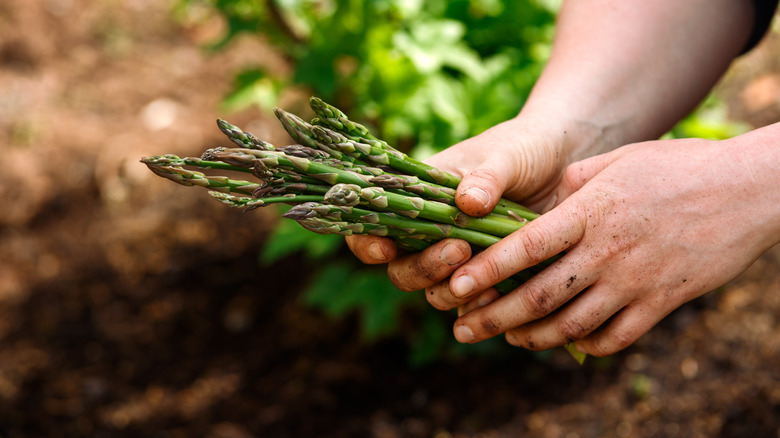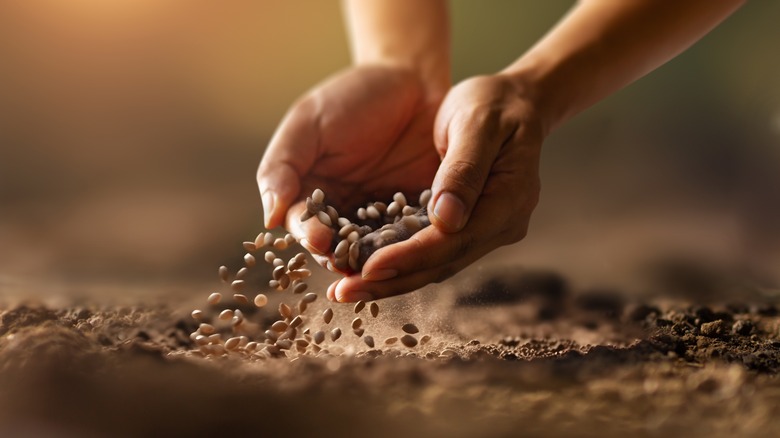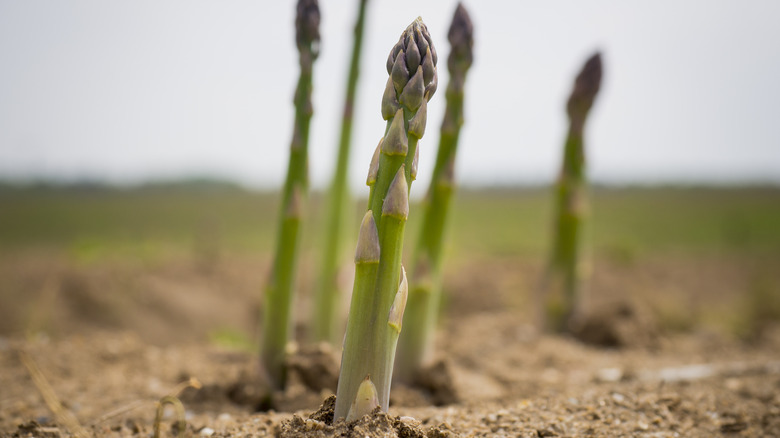How To Successfully Grow Asparagus From Seed
Asparagus (Asparagus officinalis) is a wonderful perennial vegetable that's hardy in USDA zones 3 through 10. It's well-loved because it will continue producing delicious spears for 15 to 20 years. At the same time, it can be one of the most difficult vegetables to grow in your garden. Once seeds have been planted, it can take three years before your asparagus will be ready to harvest. This is partially why asparagus is often grown from crowns that have already been developing for a year. However, though this reduces the time until harvest, it is often more expensive. It may be more time consuming to grow asparagus from seed, but it can prove successful with a little care and patience. To begin, you'll plant and care for the seeds, then plant them deeper in the first year, care for them throughout the second, and hopefully harvest them in the third.
When starting your seeds, you can choose to grow them in separate pots indoors or in your garden, but after a year they will need to be transferred and planted deeper in the soil. Your seeds should be planted in spring after being submerged in water for several hours or overnight. This will aid your asparagus seeds in starting the germination process. Within two to eight weeks, your vegetable plants will start to sprout.
Planting asparagus seeds
If you'd prefer to start growing your asparagus seeds indoors in pots, you will be able to start as early as February since you won't need to worry about chilly outdoor temperatures. These vegetables prefer that their soil is between 70 and 85 degrees Fahrenheit when germinating and should be planted ¼ to ½ inch deep in well-draining soil, such as a sandy soil. In the weeks before your seeds germinate, make sure the soil stays moist by giving your plants a little water every few days. You'll also need to place your plants in an area with full sun after they sprout. When about 12 weeks have passed and outside temperatures are staying above 60 degrees, you can transfer your asparagus to your garden. Your asparagus seedlings will need to be in rows that are distanced 3 to 6 feet apart. In each row, your seedlings should have 18 inches of space between them.
Those that prefer to plant their seeds directly in the garden will have to wait a little longer until there's no chance of frost, but they won't have to transfer the plants until next year. Place the seeds 3 inches apart and an inch deep in your garden, with the rows spaced 12 inches apart. Once the seeds sprout, they should be watered one to two times per week and the crowns should be covered in soil as they develop. Use straw or mulch to cover the plants when temperatures drop in the fall.
Caring for asparagus plants
The year after your seeds were planted, you'll want to relocate them to their permanent home in your garden. These plants should be placed in an area with lots of sunlight and deep, well-draining soil. You may also want to consider how these tall plants will affect the rest of your garden, as they can block the sun. In some cases this is helpful, like how dill thrives when planted near this popular vegetable because of the cool shade it casts. Remove the year-old crowns from the dirt at the start of spring, being careful not to damage the roots. Now, you'll need to dig trenches in your garden to house the crowns. They should be a maximum of 12 inches deep in sandy soils and 8 inches in clay soils.
Make the length of the trench enough to space each crown about a foot apart. You'll want to save the dirt you dig up, as you will continue using it to cover the base of the plant as it grows. Set your asparagus plants in the trench, place a few inches of soil over them, and water. These plants will grow into ferns, and you can prune your asparagus tops each spring or fall. Within a couple years, you should be able to harvest your delicious vegetables.


